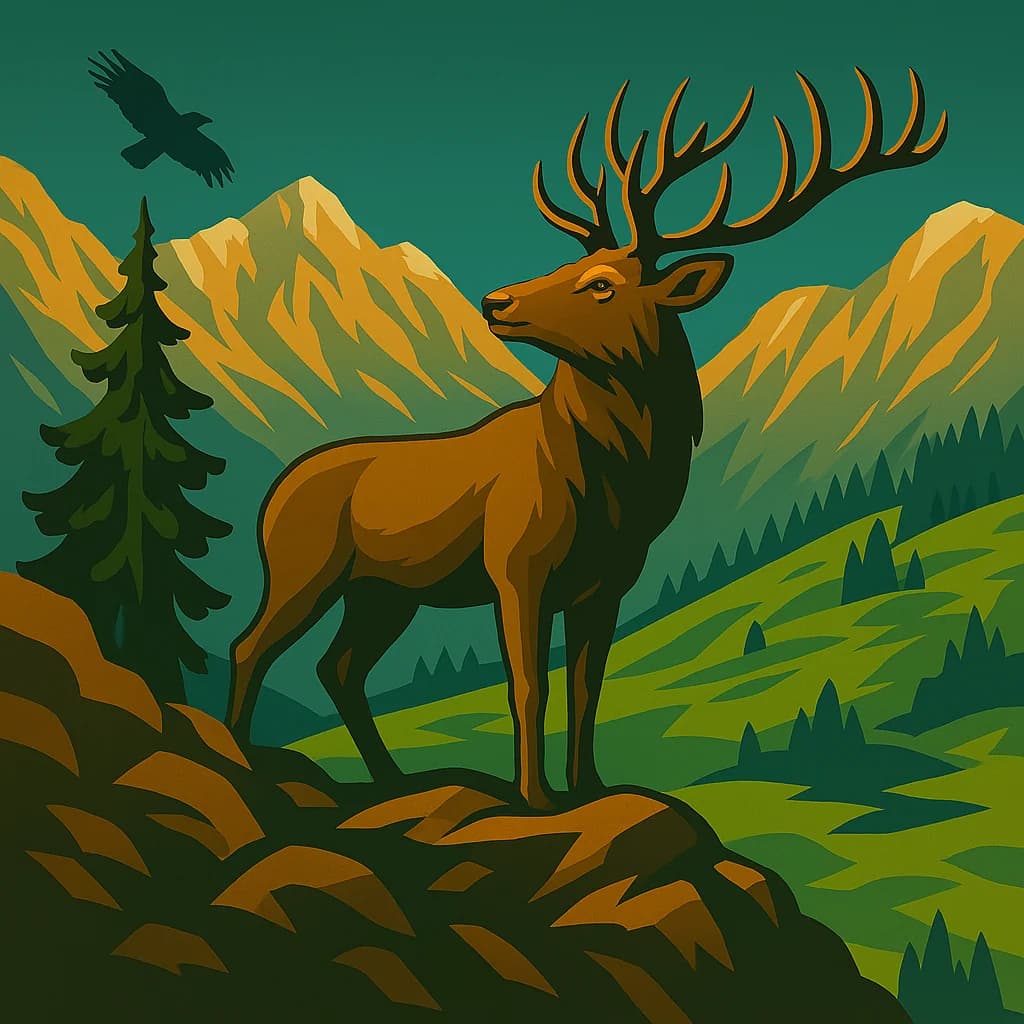Protected Areas in Switzerland
Understanding special regulations in Switzerland's most precious natural areas
Switzerland has various types of protected areas where camping regulations are typically more restrictive than in other regions. These areas are established to preserve biodiversity, protect sensitive ecosystems, and maintain the natural beauty of Switzerland's landscapes.
Below you'll find information about the main types of protected areas in Switzerland and general guidelines for camping in or near these areas. Always check specific regulations for each protected area before planning your trip.

Swiss National Park
Swiss National Park was founded in 1914 following early private initiatives. It protects untouched alpine ecosystems, diverse wildlife, and rugged landscapes. Its defined borders and successive expansions ensure conservation, offering nature enthusiasts a unique and inspiring experience.
Camping is strictly prohibited in all areas of the national park.

Hunting Ban Reserves
Federal hunting ban reserves have regulated wildlife populations since 1875, aiming to restore species such as chamois, red deer, roe deer, and ibex. These zones promote native fauna recovery while protecting sensitive species, ensuring balanced ecosystem management and long-term biodiversity.
Camping is generally prohibited in these areas.

Pro Natura: Nature Preserves
Pro Natura’s nature preserves safeguard over 770 designated sites across Switzerland, protecting diverse ecosystems and rare species. These areas offer managed habitats that promote conservation, allowing visitors to admire pristine landscapes while ensuring sustainable stewardship.
Camping is prohibited in most nature reserves.

UNESCO World natural heritage
UNESCO World Natural Heritage sites in Switzerland represent cultural and natural treasures of universal value. These areas are legally protected to preserve unique historical landmarks and pristine ecosystems, offering visitors a glimpse into the nation’s rich legacy and natural beauty.
Camping regulations vary depending on location.

Designated wildlife areas
Designated wildlife areas in Switzerland provide sanctuaries where human disturbance is minimized, ensuring safe havens for native fauna. These regions, established by law, promote natural behavior and conservation by limiting recreational impacts on sensitive species and habitats.
Camping and bivouacking are prohibited in these zones.

Mire landscapes
Mire landscapes in Switzerland are semi-natural regions dominated by peat bogs that support unique flora and fauna. They are valuable cultural and ecological assets, preserving natural heritage and offering serene environments that underscore the importance of sustainable landscape management.
Camping is prohibited in mire landscapes.

Fens
Fens, remnants of ancient natural and cultural landscapes, harbor specialized communities of plants and animals, including many endangered species. They illustrate the fragile balance of wetland ecosystems and emphasize the urgent need for conservation efforts to halt their rapid decline.
Camping is prohibited in fens.

Raised bogs
Raised bogs are highly sensitive peatland ecosystems that have dwindled to just 10–20% of their original extent in Switzerland. They offer rare habitats for specialized species and are subject to rigorous conservation measures to maintain their unique environmental functions and biodiversity.
Camping is prohibited in raised bogs.

Floodplains
Floodplains are natural wetland areas located along rivers that play a crucial role in maintaining ecological balance. They support diverse habitats for numerous species, regulate water flow, and provide essential services such as flood mitigation and nutrient cycling in dynamic landscapes.
Camping is prohibited in floodplains.

Dry grasslands
Dry grasslands, shaped by agricultural use, have lost about 90% of their area since the 19th century. Today, nearly 40% of plant species and 50% of animal species dependent on these habitats are threatened. The federal inventory currently lists 3951 officially recognized dry grassland sites.
Camping is prohibited in Dry grasslands.

Biosphere reserves
Biosphere reserves protect ecosystems while promoting research, sustainable land use, and education. They showcase human and natural history, recognized as UNESCO World Heritage sites and biospheres, and stand as eloquent examples of impressive cultural achievements and natural wonders.
Camping is prohibited in Biosphere reserves.

Emerald sites
The Emerald Network protects endangered animal and plant species and their natural habitats as defined in the Bern Convention. To achieve Emerald status, species or habitats must fulfill precise criteria. After canton consultations, Switzerland registered 37 sites with the Council of Europe.
Camping is prohibited in Emerald sites.

Ramsar Sites
Ramsar sites in Switzerland are wetlands of international importance, protected under the 1976 Ramsar Convention. They conserve critical habitats for water and migratory birds while preserving unique aquatic ecosystems. These areas exemplify sustainable management of fragile wetland environments.
Camping is strictly regulated in Ramsar sites to protect the sensitive wetlands.
Explore all protected areas in Switzerland with an interactive map:
View Protected Areas MapAdditional Information
For detailed information about specific protected areas and their regulations, please consult: